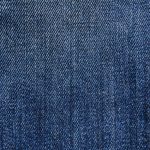If you’ve ever wondered what fabric satin is, you’re in the right place! In this article, we’ll explore the definition, history, characteristics, and different types of satin fabric.
We’ll also delve into its common uses, how it’s made, and how to care for it.
So sit back, relax, and get ready to discover everything you need to know about this luxurious and versatile material.
Table of Contents
The Definition of Satin
Satin is a smooth and glossy fabric that’s commonly used in luxurious clothing items. It is known for its elegant sheen and soft, silky texture. The origin of satin can be traced back to ancient China, where it was first created using silk fibers. The fabric was then introduced to Europe during the Middle Ages and quickly gained popularity among the nobility due to its luxurious appearance.
Throughout history, satin has been a staple in fashion trends. In the 1920s, it became synonymous with the glamorous flapper style, often used in sleek evening gowns and accessories. In the 1950s, satin was a favorite choice for wedding dresses, adding a touch of opulence to the bride’s ensemble. Today, satin is still widely used in the fashion industry, seen in a variety of garments including dresses, lingerie, and even shoes.
Satin’s popularity in fashion can be attributed to its versatility and timeless appeal. Its smooth surface reflects light beautifully, giving off a luxurious sheen that instantly elevates any outfit. Additionally, satin is known for its comfort, as its soft texture feels delightful against the skin.
Overall, satin remains a beloved fabric in the world of fashion, appreciated for its origin, versatility, and ability to add a touch of elegance to any ensemble.
The History of Satin Fabric
Although it’s often associated with luxury and elegance, the history of satin fabric goes back centuries. Satin has its origins in ancient China, where it was first created using silk fibers. The Chinese were skilled in the art of silk production and discovered a way to weave the fibers in a way that created a smooth and shiny surface. This fabric was highly prized and used primarily by the upper classes.
As trade routes expanded, satin fabric made its way to other parts of the world, including Europe. It quickly became popular among the nobility and was used to create luxurious garments and furnishings. The production of satin eventually spread to other countries, and different variations of the fabric emerged.
In the 19th century, advancements in textile manufacturing allowed for the production of satin using synthetic fibers such as polyester. This made satin more affordable and accessible to a wider range of people.
Today, satin fabric continues to be associated with elegance and is commonly used in the fashion industry for evening gowns, lingerie, and accessories. Its smooth and shiny appearance adds a touch of luxury to any garment or decor item.
Characteristics of Satin Material
With its smooth and shiny surface, satin material is known for its luxurious appearance. Satin is often compared to silk due to their similar appearance and feel, but they are actually different fabrics. Silk is made from natural fibers produced by silkworms, while satin can be made from various materials, including silk, polyester, or nylon.
Here is a comparison between satin and silk:
| Satin | Silk |
|---|---|
| Synthetic or natural fibers | Natural fibers from silkworms |
| Smooth and shiny surface | Smooth and lustrous surface |
| More affordable | Expensive |
| Less delicate | More delicate |
| Easier to care for | Requires special care |
One of the benefits of satin pillowcases is their effect on hair and skin. Satin’s smooth surface reduces friction, preventing hair breakage and frizz. It also helps to retain moisture in the hair and skin, reducing dryness and promoting a healthier appearance. Additionally, satin pillowcases are hypoallergenic, making them ideal for people with sensitive skin or allergies.
Different Types of Satin Fabric
There are several types of satin commonly used in the textile industry. Satin, a smooth and shiny fabric, comes in a variety of finishes, each with its own unique characteristics. Here are the different types of satin fabric:
-
Satin Weave: Satin is typically woven using a satin weave, which creates a lustrous and smooth surface. This weave technique involves floating the weft yarns over multiple warp yarns, resulting in a high sheen and luxurious feel.
-
Polyester Satin: Polyester satin is a popular choice in the textile industry due to its affordability and durability. It is often used for bedding, upholstery, and apparel. Polyester satin has a smooth and silky texture, resembling silk.
-
Silk Satin: Silk satin is a luxurious fabric made from natural silk fibers. It has a soft and delicate feel, with a natural sheen that gives it an elegant appearance. Silk satin is often used for high-end clothing, lingerie, and bridal wear.
In terms of finishes, satin and silk are often confused. While satin refers to the weave structure, silk is the material used to create the fabric. So, you can have silk satin or polyester satin, depending on the fiber used.
Common Uses of Satin
When it comes to versatility, satin fabric reigns supreme.
Satin can be used in a wide range of applications, from clothing to home furnishings.
Its smooth and lustrous texture sets it apart from other fabrics, making it a popular choice for formal attire and luxurious bedding.
Satin also has unique properties that make it stand out in comparison to other fabrics, such as its ability to reflect light and its resistance to wrinkling.
Versatility of Satin
You can easily dress up or dress down satin fabric for any occasion. Satin has long been a popular choice in the fashion industry, known for its luxurious and smooth texture. It is commonly used in evening gowns, lingerie, and bridal wear, adding an elegant and glamorous touch to any outfit.
On the other hand, satin is not limited to the fashion world alone. It has also found its way into home décor, bringing a touch of sophistication to living spaces. Satin pillows, curtains, and beddings create a luxurious ambiance in bedrooms, while satin tablecloths and napkins elevate the dining experience.
With its versatility, satin fabric can effortlessly transition from fashion runways to stylish home interiors, making it a timeless and versatile choice for any setting.
Satin Vs Other Fabrics
If you’re considering different fabrics, it’s worth noting that satin offers a unique combination of elegance and versatility that sets it apart from others. When comparing satin to silk, you’ll find that satin is more affordable and easier to care for, making it a practical choice for everyday use. Satin also has a smoother and shinier finish compared to silk, giving it a luxurious look. On the other hand, when comparing satin to velvet, satin is lighter and more breathable, making it suitable for warmer climates. Velvet, on the other hand, has a plush and soft texture that adds a touch of opulence to any setting. Here is a comparison between satin, silk, and velvet:
| Satin | Silk | Velvet | |
|---|---|---|---|
| Price | Affordable | Expensive | Expensive |
| Care | Easy | Delicate | Delicate |
| Finish | Smooth and shiny | Smooth and soft | Plush and soft |
| Breathability | Lightweight and breathable | Lightweight and breathable | Heavy and less breathable |
How Satin Is Made
To make satin, manufacturers weave together silk, nylon, or polyester threads. Satin production involves a meticulous process that results in a smooth, glossy fabric.
First, the chosen threads are carefully selected for their quality and strength. Then, the threads are set up on a loom, which is a device used for weaving. The loom allows the threads to be interlaced in a specific pattern, creating the characteristic satin weave.
During the manufacturing process, the threads are woven in a way that produces a glossy front surface and a dull back surface. This creates the beautiful sheen and smooth texture that satin is known for. The tight weave of satin gives it a luxurious feel and enhances its durability.
After the fabric is woven, it undergoes various finishing processes to enhance its appearance and characteristics. These processes may include dyeing, bleaching, or applying a protective coating. The finishing touches ensure that the satin fabric is soft, lustrous, and resistant to wrinkles.
Caring for Satin Fabric
When it comes to caring for satin fabric, it’s important to know how to wash it properly, dry it correctly, and remove any stains that may occur.
To wash satin, you should always use a gentle cycle on your washing machine and cold water to avoid damaging the delicate fabric.
After washing, it’s best to air dry satin fabric or use a low heat setting on your dryer to prevent shrinkage or wrinkling.
Washing Satin Properly
Make sure you’re using a gentle detergent and cold water when washing satin to avoid damaging the fabric. Satin is a delicate fabric that requires special care.
To wash satin properly, fill a sink or basin with cold water and add a small amount of gentle detergent. Gently agitate the water to create suds. Place the satin item in the water and swish it around, making sure to avoid any rough handling or scrubbing.
After a few minutes, remove the satin item from the water and rinse it thoroughly with cold water. Avoid wringing or twisting the fabric as this can cause damage.
To dry, lay the satin item flat on a clean towel and gently roll it up to remove excess water. Finally, hang the satin item to air dry, away from direct sunlight.
Drying Satin Fabric
After rinsing the satin item, gently roll it up in a clean towel to remove excess water. Drying satin properly is crucial to prevent shrinkage. Avoid wringing or twisting the fabric, as this can damage the delicate fibers.
Lay a clean, dry towel on a flat surface and place the rolled satin item on top. Gently press down on the towel to absorb more moisture. Then, carefully unroll the satin and lay it flat on a drying rack or a clean, dry towel. Ensure that the fabric is spread out evenly to prevent wrinkling.
Avoid direct sunlight or heat sources, as they can cause fading or damage. Allow the satin to air dry completely before removing it from the drying area. By following these steps, you can effectively dry satin without causing any shrinkage.
Removing Satin Stains
To remove stains from your satin item, gently blot the affected area with a clean cloth and a mild stain remover.
Here are some tips to help you effectively remove satin stains and prevent future ones:
- Blot the stain immediately: Acting quickly can prevent the stain from setting in.
- Avoid rubbing: Rubbing can damage the delicate fibers of satin and spread the stain further.
- Test a small area first: Before applying any stain remover, test it on a small, inconspicuous area to ensure it doesn’t damage the fabric.
- Follow care instructions: Always check the care label on your satin item for specific stain removal instructions.
Conclusion
So there you have it, now you know all about satin fabric.
From its definition as a smooth and glossy material to its rich history and various types, satin has a wide range of uses in fashion and home decor.
Whether you’re wearing a satin dress or using satin sheets, it’s important to know how to care for this delicate fabric.
With the right care, satin can maintain its luster and beauty for years to come.
- The Role of Nonwoven Geotextiles in Soil Stabilization - July 11, 2025
- Meltblown Nonwovens: The Heart of High-Filtration Masks - July 11, 2025
- A Beginner’s Guide to Nonwoven Fabric Types - July 11, 2025





